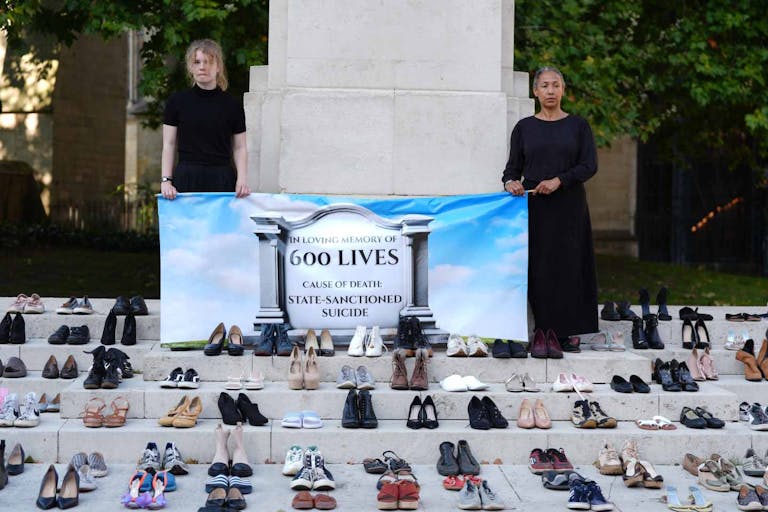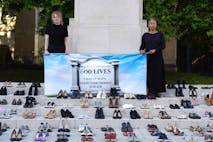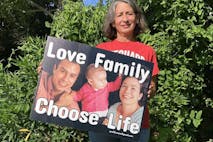
International group warns against normalizing assisted suicide and euthanasia
Angeline Tan
·
Good news from CDC: Teen sexual activity drops 12% in two decades
The Centers for Disease Control (CDC) has released some good news about the sexual activity of teens in America: Since 1995, sexual activity among high school students has dropped approximately 12 percent (from 53 percent in 1995 to 41 percent in 2015). The CDC’s report notes that the government agency “examined trends overall and by grade, race/ethnicity, and sex among U.S. high school students, using data from the 2005–2015 national Youth Risk Behavior Surveys” from 29 states, finding that on the whole, “the overall decrease in the prevalence of ever having had sexual intercourse during 2005–2015 is a positive change in sexual risk among adolescents… an overall decrease that did not occur during the preceding 10 years.”
The report notes that “during 2005–2015, a significant linear decrease in the prevalence of ever having had sexual intercourse among all students in grades 9–12 (46.8% to 41.2%) was identified.” Decreases were not found among 11th and 12th grade students between 2005 and 2015, but significant decreases in sexual activity were found among students in grades 9 and 10, and among Black students. However, the CDC currently cannot account for the reasons why such a decrease occurred:
Although these findings cannot be connected directly to any specific intervention, the results indicate that decreases in prevalence of sexual intercourse occurred among the nation’s high school students. During 2005–2015, the United States experienced significant shifts in various influences that might have affected these findings, including changes in technology and the use of social media by youth, requirements and funding for education, and innovations in and federal resources for human immunodeficiency virus infection, STI, and teen pregnancy prevention (4,5).
One thing we do know is that Planned Parenthood and the abortion industry can’t honestly take credit for a decrease in teen sexual activity, as a late 2016 Live Action News report pointed out that HHS data shows Planned Parenthood’s type of “federally-funded sex education programming has contributed to an increase of pregnancy and sexual exploration in teenagers, while other programs didn’t impact behavior changes at all.”
In an article for The Hill, Reid Wilson writes, “Those who have sexual intercourse at a younger age tend to be at higher risk for teen pregnancy and contracting sexually transmitted diseases, earlier CDC research has found.”
Article continues below
Dear Reader,
In 2026, Live Action is heading straight where the battle is fiercest: college campuses.
We have a bold initiative to establish 100 Live Action campus chapters within the next year, and your partnership will make it a success!
Your support today will help train and equip young leaders, bring Live Action’s educational content into academic environments, host on-campus events and debates, and empower students to challenge the pro-abortion status quo with truth and compassion.
Invest in pro-life grassroots outreach and cultural formation with your DOUBLED year-end gift!
And yet, Planned Parenthood, with its explicit version of sex education, seeks to gain access to more of the nation’s public school students at younger ages — and its track record for giving students healthy information isn’t so good:

Students who become sexually active earlier often find themselves dealing with STDs and unplanned pregnancies. And where will the students go for help after years of Planned Parenthood’s indoctrination? Back to Planned Parenthood, which aborts more than 321,000 preborn children each year, according to its most recent annual report. This is by design, says former facility manager Ramona Trevino, and is the way Planned Parenthood ensures future business for itself:
Planned Parenthood is in the schools for a reason. It knows it must drive a wedge between parents and their children so that Planned Parenthood can gain the child’s trust and become the voice of authority for all things sex-related.
Planned Parenthood has done a fabulous job of normalizing sexual promiscuity, STIs, deviant sexual behaviors, and abortion.
So how does Planned Parenthood meet its quotas? Here’s the answer: They need women and men to have sex, to contract STIs, for women to get pregnant, for them get on birth control, and for them to have abortions.
While the country’s 15- to 24-year-olds contract “about half of of the estimated 20 million new [sexually transmitted] infections every year,” according to The Hill, if the trend toward a decrease in sexual activity among teens continues, there is reason to hope that these numbers will begin to drop as well.
Mary Anne Mosack, executive director of sexual risk avoidance advocacy group Ascend, told Live Action News that teens are proving that they can make better decisions. “This positive trend deserves our unflinching focus to pro-actively reinforce this positive direction toward sexual delay among teens. Sexual Risk Avoidance (SRA) programs are dedicated to that important goal,” said Mosack. “Interestingly, this is not about contraceptive use or accessibility, it is about high school teens having significantly less sex. Our teens are showing us they can make healthy choices, that norms can change and, despite an increasingly sexualized culture, teens are getting the message that waiting for sex is best.”
Live Action News is pro-life news and commentary from a pro-life perspective.
Contact editor@liveaction.org for questions, corrections, or if you are seeking permission to reprint any Live Action News content.
Guest Articles: To submit a guest article to Live Action News, email editor@liveaction.org with an attached Word document of 800-1000 words. Please also attach any photos relevant to your submission if applicable. If your submission is accepted for publication, you will be notified within three weeks. Guest articles are not compensated (see our Open License Agreement). Thank you for your interest in Live Action News!

Angeline Tan
·
Analysis
Angeline Tan
·
International
Bridget Sielicki
·
International
Angeline Tan
·
International
Cassy Cooke
·
International
Angeline Tan
·
Human Interest
Kelli Keane
·
Activism
Kelli Keane
·
Politics
Kelli Keane
·
Human Interest
Kelli Keane
·
Abortion Pill
Kelli Keane
·